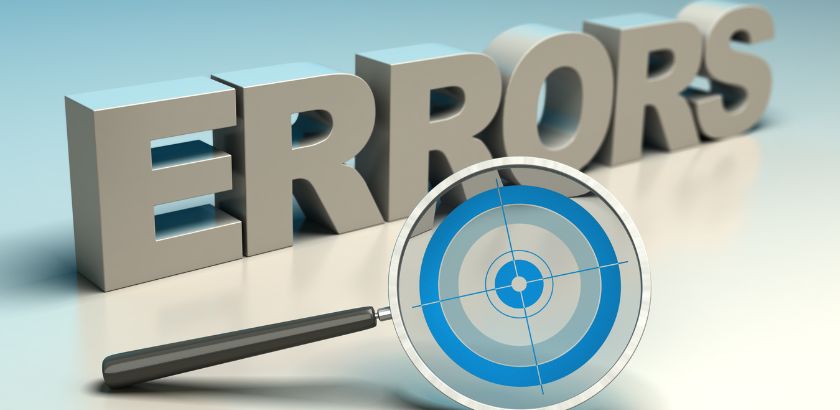Read Time:
8 Min
What You’ll Learn:
Navigating the Future of Medical Finances
Read Time:
8 Min
What You’ll Learn:
Navigating the Future of Medical Finances
In the ever-evolving landscape of healthcare, the billing process assumes a pivotal role, marked by its complexity yet underscored by its absolute necessity. At the heart of this labyrinthine system lies the imperative of simplifying healthcare billing, a task that navigates the future of medical finances with both precision and care.
This complexity is not merely a byproduct of the diverse medical services offered across the spectrum of healthcare but is also intricately tied to the myriad of policies governed by insurance companies and the regulations of federal law, including pivotal acts like the Affordable Care Act.
Central to this process is the meticulous handling of medical records. These records form the backbone of the healthcare billing cycle, encompassing everything from patient registration to the detailing of every patient encounter. Healthcare providers and their administrative counterparts delve into these records to extract pertinent data, ensuring that each medical service rendered is accurately captured.
This is where the roles of medical coders and billers become indispensable. Medical coders obtain and translate every aspect of healthcare services into standardized codes, such as the current procedural terminology, which are crucial for the accuracy of medical claims.
The medical billing career, therefore, is not just a profession but a critical cog in the healthcare industry, dealing with various aspects like patient accounts, back-end medical billing, and the management of accounts receivable.
These skilled professionals navigate through complex layers of insurance coverage, ensuring that the healthcare provider is reimbursed for the medical services delivered. The billing process resumes with the creation of insurance claims, which involves a thorough understanding of health insurance plans, including nuances such as in-network and out-of-network providers.
Healthcare providers, from large healthcare organizations to individual physician practices, rely heavily on these processes. Practice management systems become essential tools in managing these multifaceted tasks, aiding in everything from patient financial responsibility to revenue cycle management.
This involves a detailed understanding of patient demographics, insurance details, and the services provided. When a patient checks in for medical treatment, whether it be in a skilled nursing facility or for outpatient services, their insurance claim begins its journey through the healthcare revenue cycle.
Medical billers, who play a critical role in this cycle, are tasked with ensuring that patient payments and insurance claims are processed efficiently. They work in tandem with insurance companies, submitting claims and following up on any denied claim, a process that requires diligence and attention to detail.
The remittance advice, whether electronic or otherwise, received from third-party payers like insurance companies, marks a significant point in the cycle, indicating whether the healthcare provider will receive payment or if there are issues that need resolution.
This system, with its complexity, is not just about ensuring that healthcare providers are compensated for their services. It also plays a pivotal role in managing healthcare costs for patients, helping them understand their financial responsibility and aiding them in navigating the often-confusing landscape of health insurance.
Simplifying healthcare billing is crucial for navigating the complexities of medical finances, ensuring accuracy in the healthcare revenue cycle from patient registration to service billing.
Medical coders and billers play a vital role in translating healthcare services into standardized codes for claims, and managing patient accounts and insurance reimbursements, highlighting the profession’s significance in the healthcare industry.
Efficient practice management systems and diligent handling of insurance claims and patient payments are essential for both healthcare providers and patients, aiding in cost management and simplifying the health insurance landscape.
Effective patient billing begins with meticulous record-keeping and transparent communication between healthcare providers and patients. By establishing a clear, straightforward billing process, healthcare organizations can significantly reduce confusion and increase patient satisfaction. This approach ensures that every service rendered is accurately documented and billed, facilitating a smoother financial experience for both providers and patients. Emphasizing the importance of detailed medical records and open dialogue, this system not only streamlines billing procedures but also strengthens the trust and relationship between healthcare professionals and those they serve.

Understanding healthcare billing extends far beyond the realm of mere invoice generation; it is an intricate network of processes and protocols that knit together the financial fabric of the healthcare industry. This multifaceted system, pivotal in its role, ensures the smooth functioning of healthcare services, balancing the ledger between medical treatment and financial accountability. At every step, from the patient’s first contact to the final settlement of accounts, healthcare billing represents a complex interplay of medical, administrative, and financial disciplines.
In the heart of this process lies the patient’s financial responsibility, a critical component that directly impacts their access to medical treatment. The journey of healthcare billing begins when a patient enters a healthcare organization, be it for inpatient services or a consultation at a physician’s practice.
From this point, the billing process resumes with meticulous documentation of every service provided, from consultations to the use of durable medical equipment. This documentation is not just a record of services rendered; it’s the foundation upon which insurance claims are built.
Medical coders play a pivotal role in translating these services into standardized medical codes, adhering to systems like the Current Procedural Terminology. These codes are essential for creating insurance claims that are precise and reflect the actual services delivered.
These claims are then submitted to insurance companies, which may include a variety of third-party payers, ranging from private health insurance plans to national health systems. The complexity intensifies when dealing with out-of-network providers or when specialized equipment, such as durable medical equipment, is involved.
The healthcare revenue cycle, a crucial element in this ecosystem, involves the management of accounts receivable and patient payments. This cycle is not just about ensuring that healthcare organizations are reimbursed; it’s about the efficient management of the entire financial interaction between the patient, the healthcare provider, and the insurance company. Revenue cycle management encompasses everything from verifying a patient’s health plan, and managing insurance claims, to the follow-up on unpaid claims.
Healthcare costs, a growing concern in today’s society, are significantly influenced by the effectiveness of the billing process. Insurance companies and healthcare providers negotiate to pay claims, often based on complex contracts and healthcare plans.
The use of technology, such as practice management systems, has become increasingly vital in streamlining these processes. These systems help in organizing patient contacts, tracking the status of insurance claims, and managing patient demographics and insurance information. Furthermore, compliance with federal regulations, including the use of National Provider Identifiers and adherence to healthcare laws, adds another layer of complexity to the billing process.
Wakefield stands as a testament to innovation in healthcare billing. Our approach, centered on simplifying and streamlining billing processes, sets a new standard in the industry. By adopting advanced technologies and patient-centric strategies, they have successfully tackled the common challenges of billing, enhancing both the provider and patient experience.
Traditional medical billing, a critical yet intricate component of the healthcare industry, faces numerous challenges that often lead to inefficiencies and inaccuracies. These challenges arise from an array of factors including outdated manual processes, the convoluted nature of billing codes, and a significant lack of transparency. These issues not only fuel patient dissatisfaction but also place a considerable administrative strain on healthcare providers and medical billing professionals.
The labyrinth of medical billing begins with patient registration, where collecting accurate patient demographics is crucial. This initial step is vital as it influences the entire billing cycle, from determining insurance coverage to ensuring the patient’s financial responsibility is accurately communicated. The complexities escalate with the involvement of various healthcare services, from inpatient services at a skilled nursing facility to durable medical equipment used for patient care. Each medical service rendered requires meticulous documentation in the patient’s medical record, forming the backbone for creating insurance claims.
Medical coders play a pivotal role in this process. They are responsible for translating every patient encounter into standardized medical codes, including procedure codes and diagnosis codes like those found in the Current Procedural Terminology (CPT) and International Classification of Diseases (ICD). This translation is vital for the healthcare provider to accurately bill for the medical services provided.
However, the challenges in medical billing are not limited to coding. The healthcare provider must also navigate the complexities of various health insurance plans, including understanding the nuances of out-of-network providers and third-party payers. The submission of medical claims to insurance companies is a delicate process, where a single error can lead to a denied claim, causing delays in the healthcare revenue cycle and impacting the accounts receivable of the healthcare organization.
Moreover, the medical billing process does not end with the creation of insurance claims. Billing professionals must engage in follow-ups, ensuring that claims are processed and payments are collected. Patient payments, insurance reimbursements, and dealing with denied claims are all part of this intricate process. The role of medical billers extends to patient collections, where they must balance the financial responsibility of the patient with compassion and understanding, often under the guidelines of federal laws such as the Affordable Care Act.
The introduction of electronic systems like electronic remittance advice and practice management systems has started to alleviate some of the burdens. These systems aim at simplifying healthcare billing by automating various aspects of the process, from patient checks to submitting claims. Yet, the journey toward a streamlined and error-free medical billing process is ongoing.
The traditional medical billing process is a complex web that demands precision, attention to detail, and a deep understanding of the healthcare system. As the healthcare industry evolves, so too must the methods and practices of medical billing. By addressing the challenges of this intricate system, we can move towards a more efficient, transparent, and patient-centric approach to healthcare billing, ultimately contributing to the reduction of overall healthcare costs and the enhancement of patient care.

Effective patient billing requires a delicate balance between ensuring transparency and maintaining operational efficiency. This involves providing clear and concise billing statements, offering flexible payment options, and maintaining open lines of communication with patients. Achieving this balance is key to building trust and ensuring patient satisfaction.
The introduction of technology in healthcare billing has been a game-changer. Automated billing systems, AI-driven coding tools, and electronic health records have revolutionized how billing is managed. These technologies not only increase efficiency but also reduce the likelihood of errors, ensuring a smoother billing process for both providers and patients.
In the complex landscape of healthcare, adopting a patient-centric approach in billing is pivotal. This methodology is fundamentally about prioritizing the needs and concerns of patients at every step of the billing process. Key to this approach is the intricate involvement of medical coders and medical billers, who play a crucial role in deciphering and translating medical records and medical coding data into accurate claim forms. These professionals ensure that every patient account is handled with the utmost accuracy and care, which is essential in fostering a relationship of trust and transparency with patients.
Central to this process is the use of a sophisticated practice management system. Such a system not only streamlines the workflow for physician practices but also ensures that the claims process is efficient and error-free. By utilizing a national provider identifier, these systems enable provider organizations to effectively submit claims and collect payments, ensuring a seamless financial interaction. This becomes particularly significant when dealing with out-of-network providers, where the billing complexities can increase manifold.
In this patient-centric model, the role of a medical coder is not just confined to creating insurance claims but extends to being an integral part of the patient’s financial experience. These coders bridge the gap between clinical services and billing, ensuring that every service rendered is accurately represented and billed. In turn, medical billers take these accurately coded claims and diligently work towards submitting them. Their expertise lies in navigating the labyrinth of insurance requirements and payer-specific guidelines, which is vital in reducing claim denials and delays in payment.
This approach entails a more personalized interaction with the patient. For instance, the medical biller often becomes the point of contact for patients, addressing their queries regarding their patient accounts and assisting them in understanding the nuances of their medical bills. This direct interaction not only demystifies the billing process for patients but also aids in creating a more transparent and approachable financial environment.
Healthcare billing is governed by a complex set of laws and regulations. Ensuring compliance while navigating these regulations is a significant challenge for healthcare providers. Failure to comply can lead to legal penalties, claim denials, and reputational damage. Staying informed and proactive in regulatory compliance is essential for successful healthcare billing.
Best practices in medical billing include accurate coding, effective claim management, and proactive error prevention. These practices ensure that billing processes are not only compliant but also efficient and patient-friendly. Continual training and development of billing staff are essential to maintain these high standards.
The role of healthcare staff in billing extends beyond mere administrative tasks. Their expertise in coding, patient communication, and claim management is vital for an efficient billing process. Investing in their training and development is an investment in the overall quality of the healthcare billing system.

In the intricate realm of healthcare finance, minimizing errors is not just a task but a commitment to precision, particularly within physician practices and broader provider organizations. This commitment is paramount in maintaining patient trust and ensuring the financial stability of healthcare institutions. Common errors in this domain can range from incorrect medical coding and insufficient medical records documentation to inaccurately billing for non-covered services by an out-of-network provider. These mistakes, although often unintentional, can have significant repercussions, leading to distrust and financial discrepancies.
To address these challenges, the role of a medical coder is critical. They are the linchpins in translating complex medical procedures and diagnoses into standardized codes, which are then utilized to create insurance claims. Their precision and expertise are vital in ensuring that the claims process is accurate and compliant with the myriad of regulations governing healthcare billing.
Similarly, medical billers play a crucial role in this ecosystem. They are responsible for preparing and submitting claim forms to insurance companies and working diligently to collect payments. By meticulously reviewing each account, they ensure that all claims are accurate and complete before submission. Their expertise is especially crucial when dealing with out-of-network providers, where billing complexities are often heightened.
The implementation of an advanced practice management system is another key strategy in reducing billing errors. These systems provide an integrated platform where medical coding, claim form preparation, and the patients’ account management are seamlessly handled. With features like automatic checks for coding errors and alerts for unusual billing patterns, these systems play a pivotal role in ensuring accuracy and efficiency.
Case studies of successful billing practices offer invaluable insights into the possibilities of simplified billing. These real-world examples demonstrate the positive impact of streamlined processes, technological adoption, and patient-centric strategies on the overall billing experience.
The future of healthcare billing looks promising, with advancements in technology and a growing emphasis on patient-centric approaches. The potential for further innovation, particularly in the realms of AI and machine learning, holds the promise of even more streamlined and efficient billing processes.
Navigating the relationship with insurance companies is a critical aspect of healthcare billing. Building effective communication channels and understanding the intricacies of different insurance policies are essential for smooth claim processing and reimbursements.

Billing for specialized medical services presents unique challenges due to the complexity of treatments and specific coding requirements. Tailoring billing practices to these specialized services is crucial for accuracy and efficiency.
Educating patients about healthcare billing empowers them to understand their bills, the billing process, and their financial responsibilities. Providing educational resources and counseling can demystify billing and foster a more transparent relationship between patients and healthcare providers.
The decision between managing billing in-house or outsourcing involves weighing the benefits and challenges of each approach. Factors like cost, control, expertise, and scalability play a critical role in this decision-making process.
Improving the efficiency of the billing cycle is fundamental to the financial health of healthcare providers. Strategies like streamlining workflows, adopting advanced billing software, and regular audits can significantly enhance the billing process.
Soliciting and incorporating feedback from patients and staff is essential for the ongoing improvement of the billing process. It fosters a culture of continuous learning and adaptability, ensuring that billing practices remain effective and patient-centric.
In conclusion, simplifying healthcare billing is a journey marked by challenges and opportunities. The integration of technology, adherence to best practices, and a focus on patient experience are pivotal in shaping a more efficient, transparent, and user-friendly billing system. As we look ahead, the continued evolution of billing practices will play a crucial role in the overall enhancement of healthcare services.
What is healthcare billing and why is it important?
Healthcare billing is the process of submitting and following up on claims with health insurance companies to receive payment for services provided by a healthcare provider. It’s crucial because it ensures healthcare providers are reimbursed for their services, enabling them to continue offering medical care.
How does medical billing differ from medical coding?
Medical billing involves preparing billing claims and submitting them to insurance providers, ensuring that the healthcare provider is compensated for their services. Medical coding, on the other hand, involves translating medical reports, including the patient’s diagnosis and the procedures performed, into standardized codes used for billing.
What are the typical steps in the medical billing process?
The medical billing process includes patient registration, insurance verification, service provision, coding of services, claim submission, payment posting, and handling denied claims or follow-ups. It’s a comprehensive process that ensures accurate billing and timely payment.
Why is understanding insurance coverage important in healthcare billing?
Understanding insurance coverage is crucial because it determines the amount payable by the insurance company and the patient’s financial responsibility. It helps in avoiding billing errors and ensures that patients are accurately charged for the services rendered.
What role do healthcare providers play in the billing process?
Healthcare providers are responsible for ensuring accurate and complete documentation of services rendered. They must also maintain compliance with billing regulations and work collaboratively with billing staff to manage the revenue cycle effectively.
How has technology impacted healthcare billing?
Technology has significantly transformed healthcare billing with electronic health records, automated billing systems, and digital claim submission. This has led to increased accuracy, reduced processing time, and better compliance with regulatory requirements.
What challenges are faced in healthcare billing?
The major challenges include navigating complex insurance plans, maintaining compliance with changing healthcare regulations, managing denied or rejected claims, and ensuring patient satisfaction with the billing process.
What is the importance of patient engagement in healthcare billing?
Patient engagement is important as it ensures patients understand their bills, the billing process, and their financial responsibilities. This transparency helps in building trust and can lead to a better overall healthcare experience.
Can technology completely automate the healthcare billing process?
While technology can automate many aspects of healthcare billing, the process still requires human oversight for accuracy, handling complex cases, and providing personalized patient interactions. The combination of technology and skilled professionals is essential for effective billing.
How do healthcare billing practices impact the overall healthcare system?
Efficient healthcare billing practices directly impact the financial health of healthcare providers and the affordability of care for patients. Streamlined billing processes can lead to faster reimbursements, reduced administrative costs, and improved patient satisfaction, contributing to a more robust and accessible healthcare system.